CompTool’s 2024 study on pay transparency provides a comprehensive analysis of the evolving practices within the compensation functions of various organizations. This report surveyed a broad spectrum of 354 organizations across different sectors and sizes to assess the impact and implementation of pay transparency in job postings. The study sheds light on the motivations, methods, and outcomes associated with the disclosure of pay ranges.
CompTool's 2024 Pay Transparency Report
Send download to
Key Findings
Current Implementation of Pay Transparency
The study reveals a significant trend towards the inclusion of pay ranges in job postings, with 84% of organizations incorporating pay transparency to some degree—an increase from the previous year. This shift indicates a growing emphasis on transparency in compensation practices.
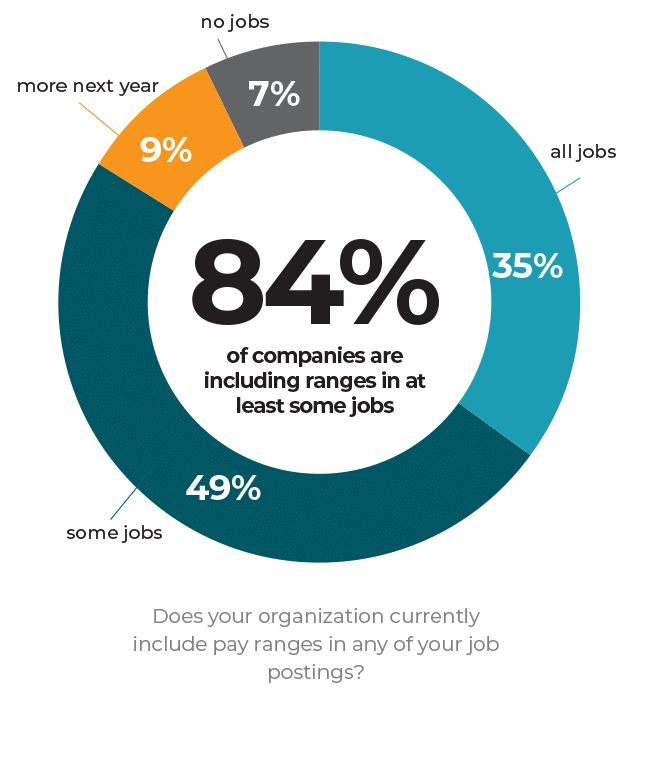
Legal Compliance and Voluntary Practices
Despite 92% of organizations operating in regions where pay transparency is not legally required, 56% still choose to disclose pay ranges. This voluntary adoption highlights a proactive approach towards transparency, aiming to enhance fairness and clarity in compensation. Job postings commonly detail the base pay, and less frequently, bonuses and other compensation components, reflecting a cautious but expanding approach to transparency.
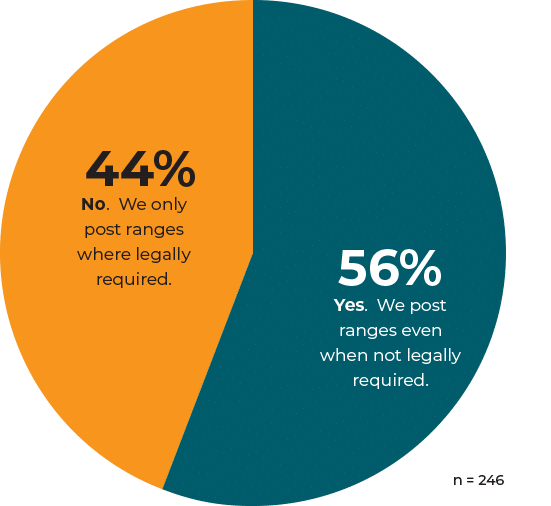
Pay Range Communication in Job Postings
Organizations tend to disclose a subset of the pay range in their job postings, with 63% opting for this method. This approach likely aims to balance transparency with flexibility in compensation negotiations. The report suggests that companies are adapting their communication strategies to better align with market expectations and internal equity goals.
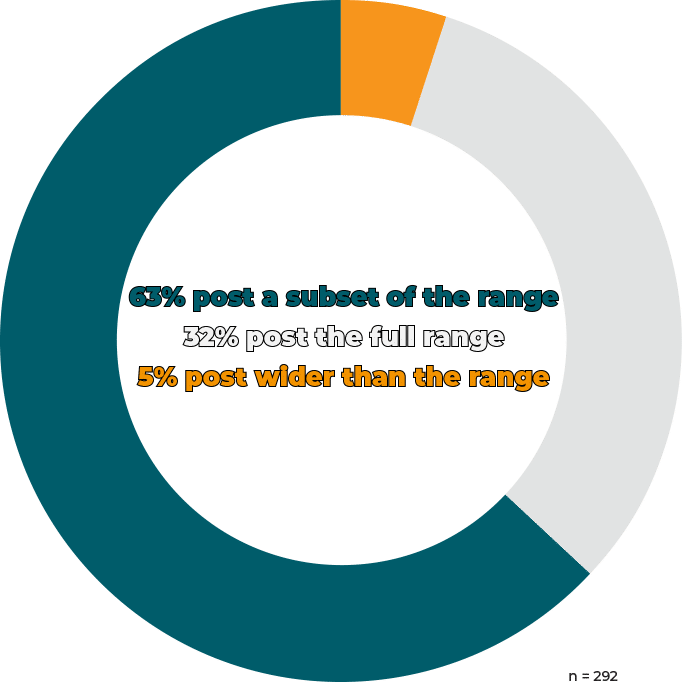
Impact of Pay Transparency on Various Aspects
Pay transparency has predominantly positive effects, with 44% of respondents viewing its impact as beneficial, particularly in legal compliance and recruitment efficiency. However, it also increases administrative burdens and fosters speculation among employees about pay. Despite these challenges, the overall sentiment remains favorable, indicating that the benefits of transparency, such as improved candidate attraction and enhanced company reputation, outweigh the drawbacks.
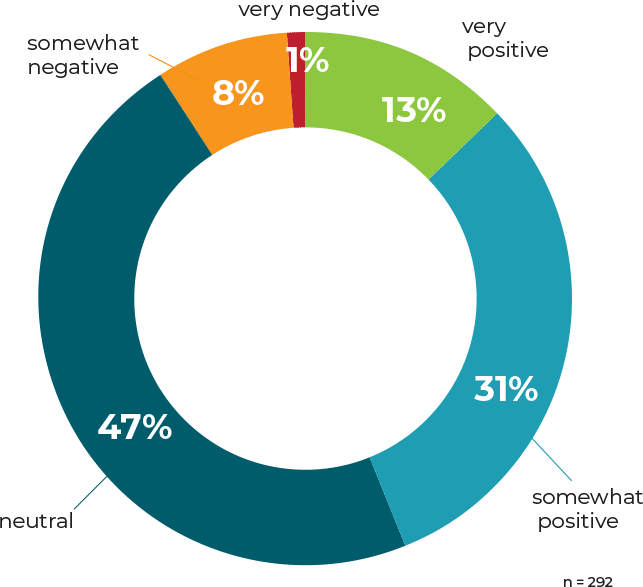
Future Outlook
Looking ahead, 46% of organizations anticipate increasing their use of pay transparency in job postings, with large organizations being particularly proactive in this area. This forecast suggests a continuing trend towards greater openness in compensation practices, driven by positive feedback and the competitive advantage gained from transparency.
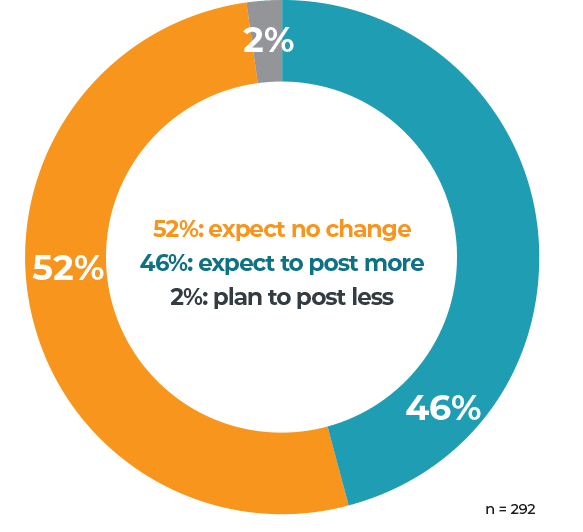
Organizational Initiatives in Response to Pay Transparency
In response to the growing need for transparency, organizations have launched several initiatives, such as training for managers (53%) and conducting internal audits (44%). These efforts are crucial for ensuring that pay transparency is implemented effectively and supports broader goals of pay equity and compliance.
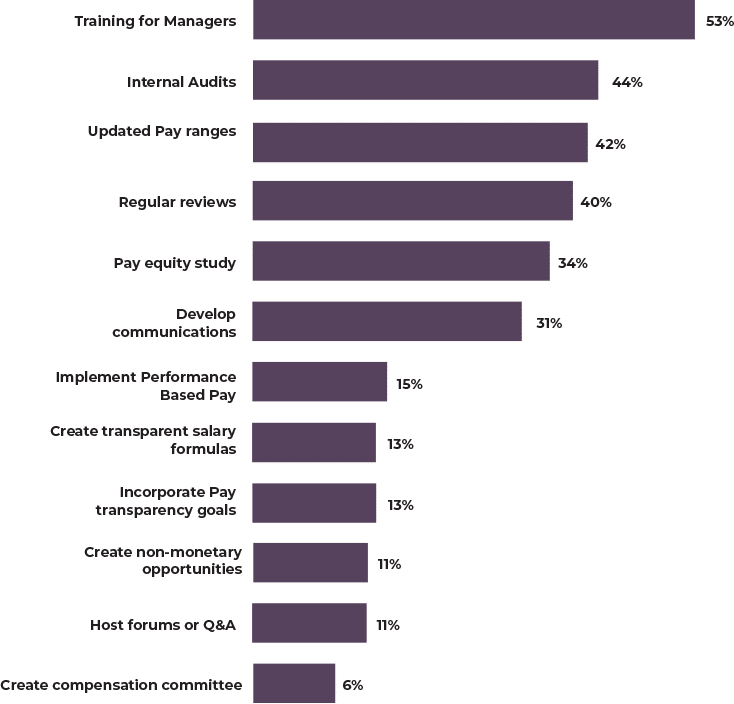
Employee Queries and Concerns
Pay transparency has led to a variety of employee inquiries, primarily focused on understanding how pay ranges are determined and how individual compensation is calculated. This indicates a desire among employees to engage more deeply with the factors that influence their pay, reflecting a shift towards greater empowerment and engagement in compensation matters.

Conclusion
CompTool’s 2024 report illustrates that pay transparency is becoming a standard practice with predominantly positive impacts on organizations and their workforce. Despite the challenges it poses, such as increased administrative work and potential unrest due to pay disparities, the move towards transparency appears to be an overall positive development. Organizations that embrace this trend not only comply with growing legal demands but also promote a fairer, more equitable workplace culture. As the landscape of work continues to evolve, pay transparency will likely play a pivotal role in shaping the future of compensation strategies.



No responses yet